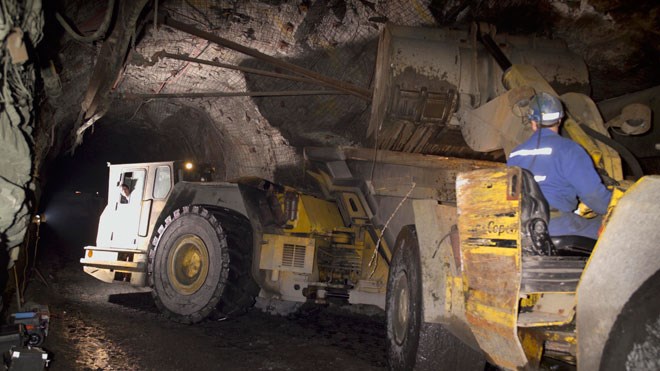Radon is a heavy, radioactive gas that is invisible and odourless. Radon is present almost everywhere – usually in small quantities – and because it is heavier than air, it typically has higher concentrations underground: like in mines and basements.
After cigarettes, it is the second leading cause of lung cancer fatalities in Ontario.
The gas is responsible for 847 lung cancer deaths in Ontario each year, about 14 per cent of all fatalities related to the disease.
In the early 1990s, Cluff and his colleagues measured radon and other sources of radiation at the 6,800 level of Creighton Mine ahead of the construction of SNOLAB, the underground laboratory built to observe subatomic particles called neutrinos.
For the lab to be effective, it had to free of dust and could not be located near any high levels of radiation.
“Every (radiation) measurement was below the allowable levels for your household,” Cluff said.
Just as radon is shed by uranium and thorium in the rock, radon itself decays into various radioactive elements — called progeny. It is the radon progeny that can cling to dust particles and cause lung cancer.
If the amount of radon in an area were given a default measurement of one, that measurement would fall below one when the air is filtred. In Creighton Mine, Cluff and his colleagues measured default levels of radon well below that, low enough people needn't worry about it, he said.
“That means the ventilation is excellent because it's getting rid of all the progeny,” Cluff said.
And the ventilation systems have only gotten better since the early 1990s, he added.
In a 2011 report on radon and health, the Canadian Nuclear Safety Commission concluded, “In uranium mines and mills, engineering design and control processes are used to capture radon at high source related areas in order to limit exposure and effective doses to miners to levels that are well below the radiation exposure limits. The current risks to lung cancer from radon and radon progeny from the operating mines and mills is very low with these controls in place.”
It was uranium mines like those in Elliot Lake that first raised concerns about radon in underground environments. More than 200 miners in Elliot Lake died due to excessive exposure to radiation before effective ventilation systems were in place at the mines.
The Radiation Safety Institute of Canada, which is creating the course Cluff says is a waste of time and money, was formed as a response to those deaths.
In May, the Ministry of Labour's Occupational Health and Safety Prevention and Innovation Program granted the institute $127,000 to develop a course that would educate mine workers and managers about the potential risks associated with radon underground.
The province's recent Mining Health, Safety and Prevention Review recommended that the Ministry of Labour review occupational exposure limits for such hazards as nitrogen dioxide and diesel particulate matter. Radon was one of the hazards the report specifically recommended the ministry consider reviewing.
“The (Radiation Safety Institute of Canada) project will provide workers, employers, associated health and safety partners and labour representatives with information on radiation hazards, as well as advice on the best radiation practices and access to qualified resources,” said Ministry of Labour spokesperson William Lin in an email to NorthernLife.ca.
Steve Mahoney, president and CEO of the Radiation Safety Institute of Canada, said that while mining companies have “dramatically improved” their ventilation systems and best practices since the early 1980s, more education is never a bad thing.
“I don't think it's ever a waste to educate the public on potential dangers,” he said. “If everything is good, then there's nothing to worry about, but that doesn't mean things can't fall between the cracks somewhere down the road.”
The institute is currently developing the course, and will offer it for free to mining sector employees through online and classroom components.
Join Sudbury.com+
- Messages
- Post a Listing
- Your Listings
- Your Profile
- Your Subscriptions
- Your Likes
- Your Business
- Support Local News
- Payment History
Sudbury.com+ members
Already a +member?
Not a +member?
Sign up for a Sudbury.com+ account for instant access to upcoming contests, local offers, auctions and so much more.
